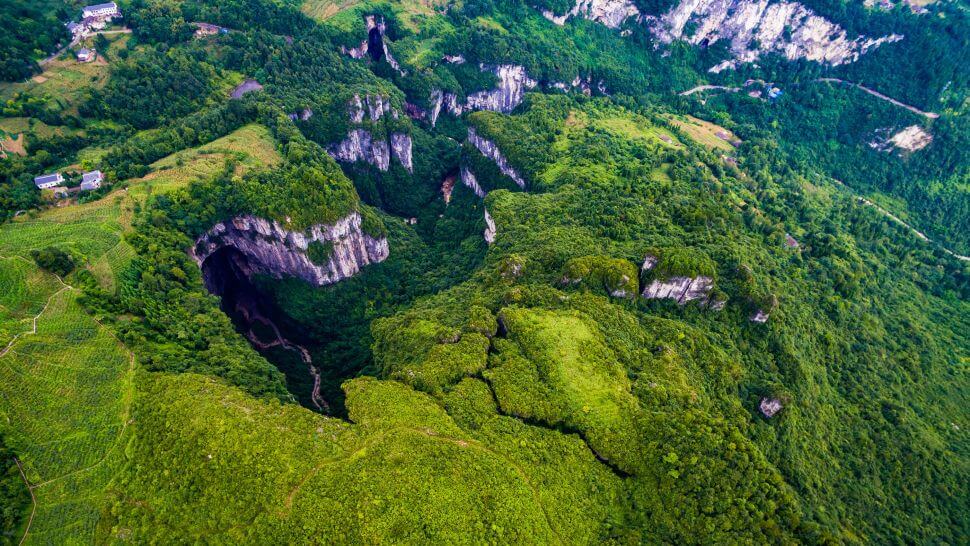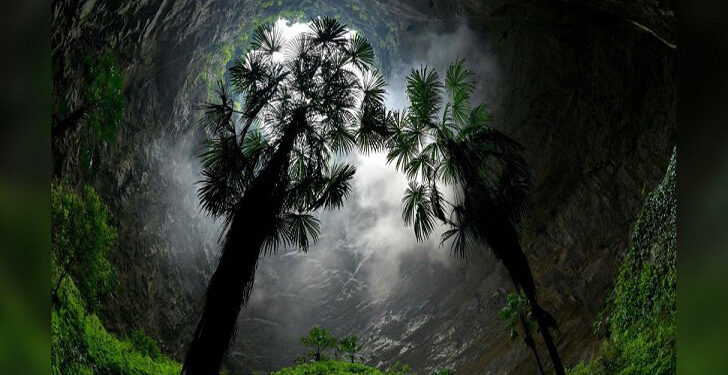Chinese scientists discovered a massive new sinkhole with a forest at the bottom.
According to the Xinhua news agency, the sinkhole is 630 feet (192 meters) deep enough to swallow St. Louis’ Gateway Arch. On Friday (May 6), a team of speleologists and spelunkers rappelled into the sinkhole, uncovering three cave entrances and old trees 131 feet (40 m) tall, arching their branches toward the sunshine that streams through the sinkhole entrance.
“This is exciting news,” said George Veni, executive director of the National Cave and Karst Research Institute (NCKRI) in the United States and a renowned cave specialist. Veni was not engaged in the cave exploration, but NCKRI’s sister institute, the Institute of Karst Geology of the China Geological Survey, was.

“Because of local changes in geology, climate, and other variables, the way karst looks on the surface can vary considerably,” he explained. “In China, there’s this aesthetically amazing karst with big sinkholes and massive cave entrances.” In other world regions, you may stroll out on the karst and not notice anything. Sinkholes can be relatively small, measuring only a meter or two in diameter. Cave entrances may be incredibly narrow, requiring you to squeeze your way in.”
According to Veni, 25% of the United States is karst or pseudokarst, which includes caverns created by processes other than dissolution, such as volcanic or wind. One of these two cave-rich areas accounts for around 20% of the world’s landmass.
According to Xinhua, the recent find occurred in the Guangxi Zhuang Autonomous Region, near Ping’s hamlet in the county of Leye. Guangxi is famous for its spectacular karst formations, including sinkholes, rock pillars, and natural bridges, and has gained its UNESCO World Heritage Site status.
Why Are Sinkholes Important?
According to Zhang Yuanhai, a senior engineer at the Institute of Karst Geology, the inside of the sinkhole is 1,004 feet (306 m) long and 492 feet (150 m) broad. The Mandarin phrase for such massive sinkholes is “tanking,” which translates as “heavenly pit,” and the bottom of the sinkhole did indeed appear to be another universe. The underground exploration team’s leader, Chen Lixin, told Xinhua that the dense foliage on the sinkhole floor was as high as a person’s shoulders. Veni believes that karst caverns and sinkholes can provide a haven for life.
“I wouldn’t be shocked if species discovered in these caverns have never been documented or characterized by science,” Lixin remarked.
Tropical ferns thrive profusely in one West Texas cave, according to Veni, and their spores were likely delivered there by bats migrating to South and Central America.
Sinkholes and caverns provide a haven for life, offering a route to aquifers or deep underground water reservoirs. Veni claims that karst aquifers give the single or significant water supply for 700 million people globally. They are, however, easily accessible and drained – or contaminated.
“The only aquifers that may be polluted with solid waste are karst aquifers,” Veni said. “I’ve extracted car batteries, vehicle bodies, barrels of God-knows-what, and bottles of God-knows-what from the active cave stream.”
According to Xinhua, the recent discovery raises the total number of sinkholes in Leye County to 30. According to China Daily, the same researchers uncovered hundreds of sinkholes in Northwest China’s Shaanxi province and a network of interconnected sinkholes in Guangxi.























